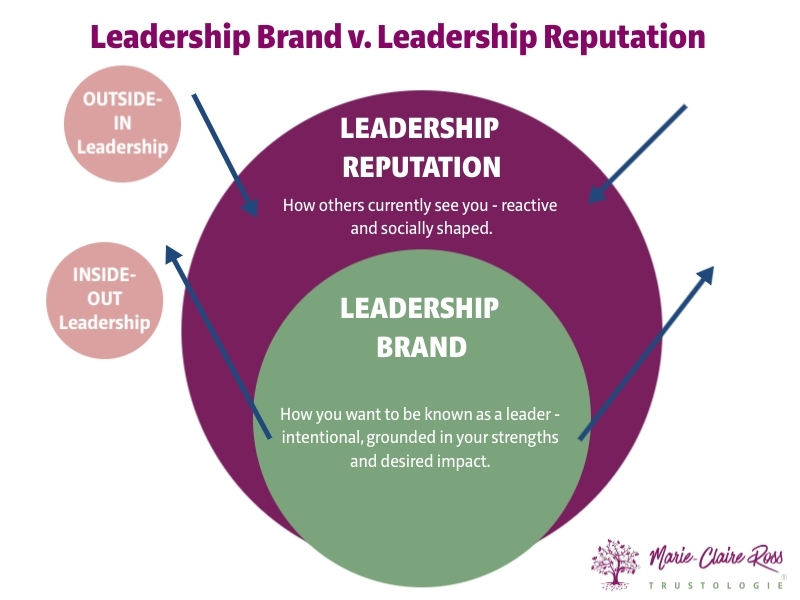6 Essential Executive Skills That Will Make You Unstoppable in 2026
The workplace is evolving at a pace few previous generations have seen and 2026 will mark a turning point. The Future of Work is blended, not hybrid....
Develop leaders, strengthen executive teams and gain deep insights with assessments designed to accelerate trust and performance.

Transform how your leaders think and perform with keynotes that spark connection, trust and high-performance cultures.

Explore practical tools, thought-leadership and resources to help you build trusted, high-performing teams.

Trustologie® is a leadership development consultancy founded by Marie-Claire Ross, specialising in helping executives and managers build high-trust, high-performing teams.

3 min read
Marie-Claire Ross : Updated on March 28, 2016

 Communication is an interesting thing. No matter how many years you have been talking, writing or even managing other people, your communication abilities fluctuate.
Communication is an interesting thing. No matter how many years you have been talking, writing or even managing other people, your communication abilities fluctuate.
While it is mostly true that those with concise and clear communication skills are more likely to be promoted to leadership positions, the skills that got you there won't keep you there.
Communication skills are one of those things you have got to be consciously improving on a regular basis. After all, we can get so lazy in our communication. Have you ever tried to write a directive email while talking on the phone, before rushing to a meeting? The chances are your email was unclear and confusing.
Aside from communication suffering when we are juggling different priorities, it also suffers if we haven't spent the time correcting easy mistakes that can cause our communication to have people scratching their heads. Or worse, not even bothering to look at it because it was underwhelmingly boring.
When it comes to unclear safety communication there are five common mistakes that I've seen made by everyday safety professionals. These are:
1. Too many messages - This is a rookie mistake that many safety professionals keep repeating when they're no longer a rookie. It's when you start writing or talking about one safety process and then throw in another. Or you go off on another tangent. For example, talking about the need to wear safety glasses but then deciding that the information should really talk about all the terrible people who aren't wearing them. It's not the time or place to complain about poor safety performance when you're trying to explain a procedure. People will stop listening or subsconsciously think "Well, if all these people aren't doing it, then I don't have to either."
2. Safety essays - You know the ones, safety articles so dense with wall to wall text, that if you try to read it out loud, you'd struggle to catch your breath. No-one needs that much information. Nor is anyone going to read it. The more information you provide people, the more likely you will confuse them. Your role is to provide the safety insight and not content for the sake of content. Your insights need to make it easy for people to understand why they need to do a procedure, what they need to do and how. People don't need to know all of the related legislation and recent legal cases.
3. Using big words - Getting an "A" in English at school was all about using lots of big words and flexing your vocab knowledge. But in the business world, people tune out. After all, how are they supposed to know what to do when they don't even know the meaning of words? I had one safety professional work with me on a manual training manual. I requested several times that he wrote the content simply. So you can understand my surprise when he substituted the word "hammer" with "percussive tool." Percussive tool, really? Ever heard the blokes out on the floor saying "Pass me the percussive tool, Percival?" I don't think so. You can imagine what our insider term is for him now (hint: starts with 't').
4. Not asking for what you want- This is a big mistake and one that I often see with safety professionals. We often underestimate the power of just asking. Directly. Many of us don’t ask for what we want – preferring to make hints, expecting people to know what you want them to do or avoid asking for fear of looking stupid.
The surprising thing is that research studies have found that people get really high compliance rates when they ask.
A couple of months ago I hosted a safety webinar and received a couple of emails from people complaining that they missed it. I assumed they wanted access to the replay and had to ask. That was what they actually wanted, but they didn't make a request. Well, I tell you what my friend, if you don't ask you don't get. It makes me wonder how they communicate about safety. Chances are they tell people a new process, but they don't both to ask them specifically and clearly on how it needs to be done. This is a critical part of communication. Giving people information is not enough. You have to ask for action. If you want to learn more about this the book, Transform Your Safety Communication goes into detail about this. Otherwise, our Fast Track Your Safety Communication Results workshops offer more interactive learning.
5. No deadline- This leads me to my next point. It's very common that safety professionals will complain that safety reports aren't being handed in on time. Clear communication is all about being specific. Be specific about what you want and when. How high, how far, how much? Where, how and with whom? Don't be hazy with this as laziness is the hallmark of a poor communicator.
Providing people with information is not enough. The real role of safety professionals is to provide people with the insights they need to keep themselves safe at work. Not lots of content.
In safety communication, it’s all about getting people to feel that the procedure is important and then make the necessary changes to their behaviour.
Image credit: Stock images by freedigitalphotos

The workplace is evolving at a pace few previous generations have seen and 2026 will mark a turning point. The Future of Work is blended, not hybrid....

Many leaders jump into a leadership position excited by the opportunity to help others and perform at a higher level.

What makes a good team leader isn’t just about having authority or getting tasks done - it’s about the ability to create an environment where people...

What is Leadership Coaching? Leadership coaching, also referred to as as executive leadership coaching, is a personalised leadership development...

We all have different styles when it comes to making decisions. When it comes to making a choice at work, how do you like to operate? Do you: A....

One on ones serve as a powerful tool for fostering stronger, more trusting relationships with each of your team members.